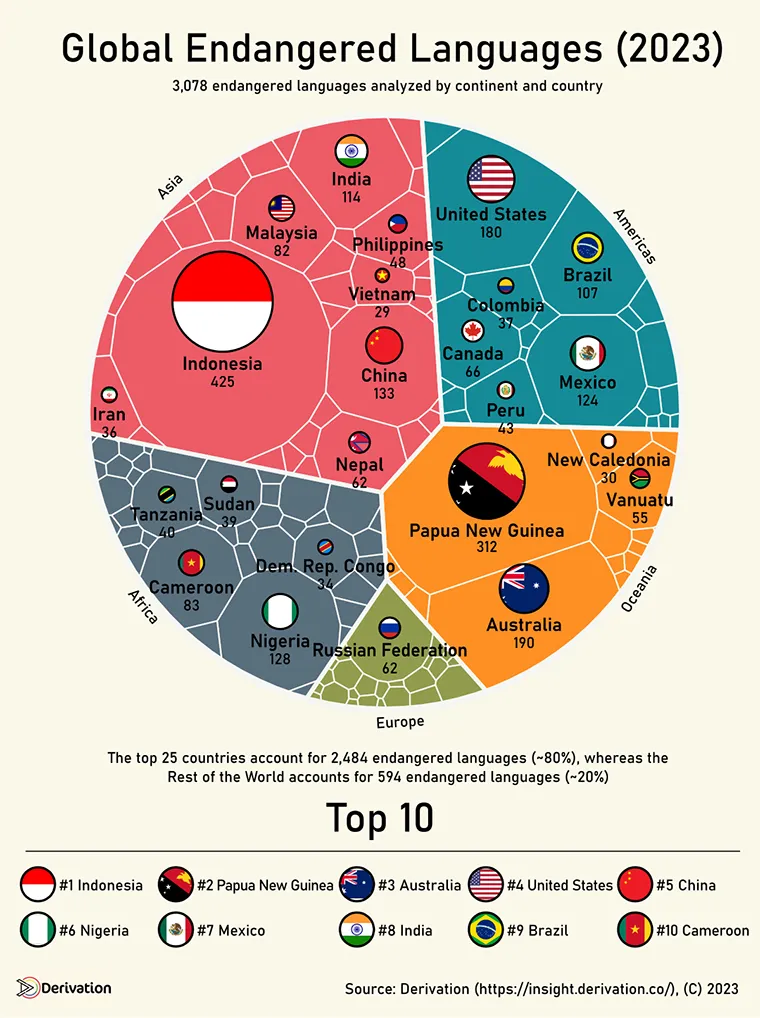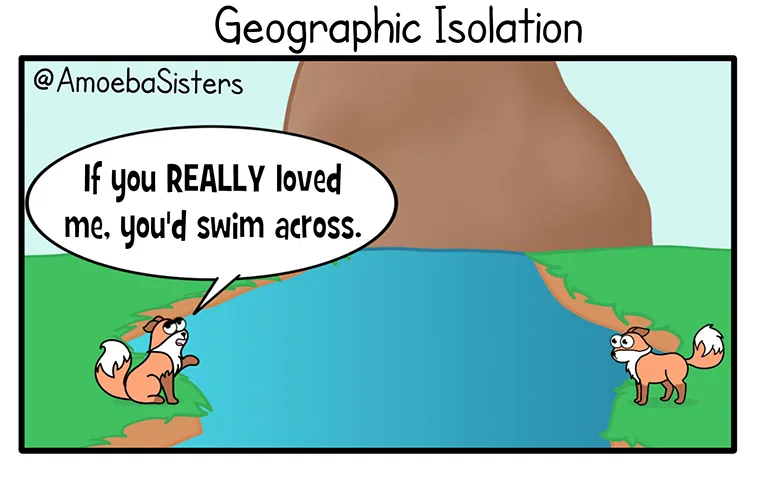A Future of Fewer Words?: Five Trends Shaping the Future of Language
by Lifeboat Foundation Advisory Board member Lawrence Baines. First published in The Futurist 46(2), 42–47.
Pictograph use is becoming more common so we rely less on words.
Overview

Natural selection is as much a phenomenon in human language as it is in natural ecosystems. An ongoing “survival of the fittest” may lead to continuing expansion of image-based communications and the extinction of more than half the world’s languages by this century’s end.
Introduction

Just after I moved to Oklahoma three years ago, I was invited to a meeting of the state’s Department of Education to discuss Native American languages. I learned that, of the 37 or so Native American languages represented in the state, 22 are already extinct. The last speakers of the Delaware and Mesquakie tongues had recently died; several other languages had only one or two speakers left.
Vanishing languages are not unique to Oklahoma. K. David Harrison, author of When Languages Die (Oxford University Press, 2008), estimates that, of the 6,900 or so languages spoken on the planet, more than half are likely to become extinct over the next century. Today, 95% of people speak one of just 400 languages. The other 6,509 languages are unevenly distributed among the remaining 5%. Hundreds of languages, most with only a few speakers still living, are teetering on oblivion at this very moment.
Why are the world’s languages disappearing? Like living organisms, languages morph over time in response to continuous evolutionary pressures. Any language is in serious trouble if it is spoken by few people or is confined to a remote geographic area. Many of the languages in northeastern Asia, for example, are in isolated, inhospitable regions where low birthrates and high morbidity rates have been facts of life for hundreds of years.
Geography and Distribution of Languages and Speakers

Image provided by the Amoeba Sisters.
Geographic isolation is a problem that Oklahoma’s dying Native American languages have in common. For example, speakers of Ottawa, of which there may be only three still living in Oklahoma, live in the northeastern part of the state, a location that draws few tourists and little business. If the remaining speakers of Ottawa are still alive, there is a good chance that they are over age 70 and rarely travel outside of the community. Anyone who would want to learn the Ottawa language would have to journey down dirt roads and knock on some unfamiliar doors to find out where these speakers live. Once you arrived on their doorstep, they still might not talk to you, especially if you are not a member of the tribe.
In New Guinea, a country that hosts a cauldron of language diversity, villagers on one side of a mountain often speak a completely different language from villagers who may live less than a kilometer away on the other side. If travel to a geographic location is difficult or interactions with speakers of other languages is restricted, then a language has no way to flourish. Like a plant that receives no pollination, a language without some kind of interaction eventually dies.
A second factor contributing to a language’s health is its social desirability. In some parts of the United States, children of first-generation immigrants often grow up in English-speaking neighborhoods, go to English-speaking schools, and come to think of English as the language of acceptance and power. Some of my Texas friends whose parents emigrated from Mexico do not know how to speak, read, or write in Spanish. One friend told me that his parents actually forbade him from speaking Spanish when he was growing up because they considered mastery of English to be essential for success in America.
According to the Global Language Monitor (www.languagemonitor.com, 2011), almost 2 billion people around the globe speak English as either a first or second language, making it the most widely spoken language in the history of the world. The closest runner-up is Mandarin Chinese, with roughly 1 billion speakers, the majority located in or around China. Spanish is the third most widely spoken language, with 500 million speakers, while speakers of Hindi and Arabic come in at fourth and fifth respectively, with between 450 million and 490 million speakers.
French was the most popular language in the world in 1800, but today, Spanish speakers outnumber French speakers worldwide by more than a 2:1 margin. English speakers outnumber French speakers by 10:1.
As the table below shows, 10 languages constitute a combined 82% of all content and traffic on the Internet. Six of them—English, Chinese, Spanish, Arabic, French, and Russian—also happen to be the six “official” languages of the United Nations. The ubiquity of these languages on the Internet, and in international relations and commerce, assures their advance for the foreseeable future.
| Language | Number of Users | Percent of Total Users | Percent Increase, 2000–2011 |
|---|---|---|---|
| English | 565 million | 27% | 301% |
| Chinese | 510 million | 24% | 1,478% |
| Spanish | 165 million | 8% | 807% |
| Japanese | 99 million | 5% | 110% |
| Protuguese | 83 million | 4% | 990% |
| German | 75 million | 4% | 174% |
| Arabic | 65 million | 3% | 2,501% |
| French | 60 million | 3% | 398% |
| Russian | 60 million | 3% | 1,825% |
| Korean | 39 million | 2% | 107% |
| Source: Internet World Stats, www.internetworldstats.com/stats7.htm | |||
Trend 1: Images Are Subverting Words

We are now using fewer words.
Not only is the world using fewer languages on a daily basis, but it is also using fewer words. Consider the rich vocabulary and complex sentence constructions in extemporaneous arguments of politicians in earlier centuries against the slick, simplistic sound bites of contemporary times.
No politician today speaks like Thomas Jefferson, whose 1801 inaugural address began with the following two sentences: “Called upon to undertake the duties of the first Executive office of our country, I avail myself of the presence of that portion of my fellow citizens which is here assembled to express my grateful thanks for the favor with which they have been pleased to look towards me, to declare a sincere consciousness that the task is above my talents, and that I approach it with those anxious and awful presentiments which the greatness of the charge, and the weakness of my powers so justly inspire. A rising nation, spread over a wide and fruitful land, traversing all the seas with the rich productions of their industry, engaged in commerce with nations who feel power and forget right, advancing rapidly to destinies beyond the reach of mortal eye; when I contemplate these transcendent objects, and see the honour, the happiness, and the hopes of this beloved country committed to the issue and the auspices of this day, I shrink from the contemplation & humble myself before the magnitude of the undertaking.”
During the nineteenth century, Abraham Lincoln and Stephen Douglas debated for hours in open, public arenas around the country. An examination of their spontaneous verbal sparring reveals dexterous vocabulary and complex thought processes delivered in speeches loaded with clarity and wit. In contrast, during the 2004 presidential campaign, George W. Bush’s campaign logo for the election was a simple W alongside an American flag, an essentially wordless communiqué.
The move from language to image is perhaps most apparent in advertisements, which increasingly emphasize sound and image to the exclusion of language. A winner of the 2010 CLIO award for the best commercial of the year was Volkswagen, whose commercial featured a series of rapid close-ups of a man and woman intimately dancing to rap music, followed in the last few seconds by a picture of a car and just two words: “Tough. Beautiful.”
To help encourage communication among tribes who have been long-time rivals, organizations working in Tanzania, where 129 “official languages” exist, have turned to images, not words, to try to get the tribes to communicate with one another. As John Wesley Young reports in Totalitarian Language (University of Virginia, 1992), translators in these organizations have found that trying to find a common language was cumbersome and fraught with unexpected problems, such as the “loaded connotations” of words like comrade and enemy. To de-escalate tensions, translators try to establish communications using only images, which require no intermediary translation and are not as encumbered by pejoration.
Trend 2: The Written Word is Losing Authority

Holy words are assumed to have potency well beyond human comprehension.
In the Bible, John 1:1 begins, “In the beginning was the Word, and the Word was with God, and the Word was God.” In Isaiah 48:13, God says, “By my word, I have founded the earth.”
In Christianity, as in most religions, holy words are assumed to have potency well beyond human comprehension, and the mere utterance of a holy word is assumed to have mystical power. J. K. Rowling borrowed this aspect of religious texts in writing the Harry Potter series of books, where her characters are often too fearful to even mention “him that need not be named” (Voldemort).
To get a sense of the power of words in earlier times, it is instructive to read the literate stirrings of a sixteenth-century Italian peasant named Domenico Scandella and his attempt to understand the Bible on his own terms. Scandella’s interpretation of the world as a ball of cheese infested with worms (angels) was considered blasphemous by the priests of the local Catholic Diocese, and he was thrown in prison several times over the course of his life, eventually dying there.
The Church assumed that Scandella’s linguistic interpretation could influence other parishioners in nefarious ways, so it silenced him. Today, thousands of political dissidents around the world are imprisoned on the same principle—that a few well-chosen words have the potency to change society.
The power of words is also substantiated by endless volumes of legal documents. In most countries, an agreement between individuals may be binding only if it is in writing and features the signatures of all involved. In courts of law, the presence of written documentation trumps oral agreements.
With the proliferation of electronic documents, clicking “I ACCEPT” has become equivalent to a written signature. Software programs downloaded from the Internet whose long, legal agreements momentarily flash upon a computer screen, are, in actuality, legally binding documents. In this manner, “proof of click” is replacing the multi-page, hand-signed documents in the legal system.
At first blush, the popularity of texting might be construed as a sort of affirmation for writing. Upon closer inspection, text messages and e-mails have more in common with oral language than written language. Text messages are usually spontaneous, one-shot efforts, written with little to no revision, often in response to a previous communication. They may include pauses (communicated through additional spaces or …), facial expressions (communicated through emoticons such as ;D for a wink and a smile), simple vocabulary, and recursive, sometimes incoherent construction, all of which are characteristics of oral language. Not surprisingly, text messages are generated by a device originally designed for speaking—a telephone.
Some texts are tweets, which are limited to 140 characters. Obviously, a 140-character limit restricts both linguistic complexity and sentence length. Few tweeters are likely to become the next William Faulkner, who commonly used more than 140 words (not characters) in a single sentence.
The cell phone has become a ubiquitous, all-purpose communications tool. However, its small keyboard and tiny screen limit the complexity, type, and length of written messages. Because no sane person wants to read streams of six-point font on a three-inch video screen, phones today are built with menus of images up to the presentation point of the messages themselves.
Trend 3: Changing Environment for Words

Libraries are moving away from books.
Most public libraries around the world are transforming from institutions focused on archives and research to centers for information and entertainment. The old conception of the library, with its mammoth, unabridged dictionary, ordered sets of reference books, and collections of bounded materials, has become a relic. Now most libraries feature large open spaces with Wi-Fi access, plenty of computer terminals, and as many film DVDs and audio CDs as can be purchased on a dwindling budget. Most libraries today spend more on non-print media than on books and magazines. In my local, college-town library, the computer stations always have a line of patrons waiting to log on, and the DVD aisles are packed with browsers, while the book stacks are relatively deserted.
Libraries are simply responding to changes in human behavior. In 1996, Americans spent more time reading than using the Internet. The following year, time spent on the Internet eclipsed reading, and the gap between reading and Internet usage has been expanding every year since. On a typical weekend, when individuals can choose how to fill their time, they read for about five minutes and they watch television, socialize, text, click around the Internet, and play video games for about five hours. In other words, the ratio of time spent with electronic media to time spent reading has ballooned to 60:1.
Research by the Kaiser Foundation found that adolescents, who are particularly heavy users of electronic media, pack a total of 10 hours and 45 minutes of media content into seven and a half hours of media interactions per day. In his book Everything Bad Is Good for You (Riverhead, 2005), Steven Johnson observes that electronic media have been shown to enhance student decision-making processes, to improve hand–eye coordination, and to promote collaborative thinking. However, most electronic media do not build vocabulary, enhance reading comprehension, or improve the quality of writing.
Television shows, even critically acclaimed series, are notoriously simplistic in their use of language. Script analyses of popular television shows such as South Park, 24, CSI, American Idol, and Friday Night Lights, all reveal a preponderance of monosyllabic words and short sentences.
Language simplification is apparent in cinema, as well. Film scripts from Avatar, Planet of the Apes, Transformers, Lord of the Rings, and Star Wars are written at a second- or third-grade readability level. The basic unit of communication for film is the image, with music and special effects playing significant, supplementary roles. Words serve only as minor support.
The move toward grander spectacle through computer-generated images moves film even more toward the visual and farther away from the linguistic. The complete dialogue for the first Terminator film, which served as a harbinger for a new era of special effects, is just 3,850 words—about as long as this magazine article.
Trend 4: Effects of Neural Darwinism

Nobel Prize winning neuroscientist Gerald Edelman postulated that the brain constantly undergoes a “survival of the fittest” process, in which cells respond to environmental stimuli and, in turn, battle for dominance. Thus, avid readers build parts of their brains that are associated with reading while those parts of the brain associated with other tasks, such as hand–eye coordination (exercised during the playing of video games, for example), stabilize or atrophy. This “neural Darwinism,” the constant fight for dominance in the brain, is evident even in very young children. The stimuli that newborns choose to pay attention to will strengthen the circuits and synapses in the brain related to the stimuli. If certain parts of the brain are not stimulated, that part of the brain will not develop.
More than 20 years ago, neuroscientist Marian Diamond noted that enriched environments increase the size of the cortex at any age. Incredibly, detectable increases in cortical development become apparent after only four days.
The hypotheses of Edelman and Diamond have been confirmed in non-laboratory settings by sociologists Betty Hart and Todd Risley, who did studies of language use among parents and children in professional and welfare homes. The sociologists observed that, by age 3, children in professional homes had twice the vocabularies of children in welfare homes.
To find out why, they recorded oral exchanges between parent and children in both environments and found that professional parents averaged 487 utterances per hour with their children with a ratio of positive to negative comments of 6:1 (six positive comments for every one negative comment). On the other hand, in welfare homes, parents only averaged 178 utterances per hour with a ratio of positive to negative comments of 1:2 (one positive comment for every two negative comments).
By age 3, the average IQ of children of professional parents was 117; the average IQ of children of welfare parents was 79. Thus, much of the achievement gap may be attributable to impoverished environments in the early years.
In a more recent Carnegie Mellon University study, psychologists Timothy A. Keller and Marcel Adam Just took PET images (Positron Emission Tomography) of the brains of children who were poor readers, and then offered the children 100 hours of intensive “reading therapy” designed to improve reading effectiveness. Upon the conclusion of the 100 hours of therapy, the students showed significant improvements in their ability to read. When photographs were taken of the children’s brains after the 100 hours of therapy, the physical structure of their brains had changed to look more like the brains of avid readers.
As the world recedes from the written word and becomes inundated with multisensory stimuli (images, sound, touch, taste, and smell), the part of the human brain associated with language will regress. While there are benefits to becoming more visually astute and more aurally discriminating, the areas of the brain associated with language are also associated with critical thinking and analysis. So, as the corpus of language shrinks, the human capacity for complex thinking may shrink with it.
Trend 5: Translating Machines

Imagine a hand-held device that can translate simple phrases into any of several foreign languages. You type a phrase in your native language and the machine instantly translates and pronounces the desired phrase in the target language. Actually, such a machine already exists and may be purchased for about $50.
While today’s machine translators are not perfect, they are surprisingly functional. Most rely on translation algorithms that depend upon the most commonly occurring words in a language. Plain-language-in and plain-language-out enhances the probability that a word is contained in the database of the device and is understandable by the listener. An erudite translation could result in misunderstanding and confusion. That is, the machine is programmed explicitly for the most common words and phrases.
The inevitable proliferation and technological improvements of translating devices will mean more plainspeak, more monosyllabic words, and fewer polysyllabic words. As world commerce continues to expand and the need to communicate in several languages becomes a standard expectation, the emphasis will be on functionality—a few, useful words and durable phrases. Again, the universe of words seems destined to shrink.
The Rise and Fall of Languages, and What Comes Next

Culture used to be taught along with a new language.
Foreign-language courses in K-12 schools and colleges used to focus upon culture as much as language. Students would study the government, religion, history, customs, foods, and etiquette of a country as much as its language. Today, foreign-language teaching is moving away from cultural awareness and toward language as a transaction. If you own a factory in Norway and you want to export your products to Vietnam, it would be in your best interest to become competent in Vietnamese as quickly as you can. What level of competency do you need to achieve your goals? How long will it take to get there? When the enterprise in Vietnam dries up, then the urgency to learn Vietnamese ceases to exist. While the loss of cultural transmission is lamentable, the focus on functionality is understandable, especially in light of widening international trade.
The reverberations of the shift from words as the dominant mode of communication to image-based media are becoming apparent. As we click more and write less, the retreat of polysyllabic words, particularly words with complex or subtle meanings, seems inevitable. The rich vocabulary in books occurs in the exposition, not the dialogue. When a book is adapted for film, a video game, or a television series, the exposition is translated into images, so the more complex language never reaches the ears of the audience. Media associated with the print world (books, magazines, newspapers) are the repositories of sophisticated language, so as individuals read less, they will have less exposure to sophisticated language.
Losing polysyllabic words will mean a corresponding loss of eloquence and precision. Today, many of the most widely read texts emanate from blogs and social networking sites, such as Facebook. Authors of these sites may be non-readers who have little knowledge of effective writing and may have never developed an ear for language. Over the next century, a rise in “tone deaf” writing seems certain.
Finally, more and more languages will disappear from the face of the planet, and world languages will coalesce into pidgin dialects as communication among cultures continues to accelerate. There will be an ongoing “survival of the fittest” battle among languages. If a language is not needed for commerce, identity, or communication, then it will shrink and possibly die.
The French novelist Gustave Flaubert once wrote, “Human language is like a cracked kettle on which we beat out tunes for bears to dance to.” As images replace words, they will foster faster comprehension, enable easier communication, support stronger retention, and stimulate new ways of thinking. The possible consequences of the contraction of written communication are difficult to discern, but ready or not, the age of the image is upon us.